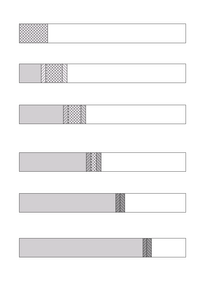Isotachophoresis

Isotachophoresis is a big word that means separating things by their sizes. Have you ever played with a ball pit, where all the balls are mixed up? Imagine that the balls are different sizes and you want to separate them into groups based on their size.
Isotachophoresis uses a special way of moving electricity to sort different pieces of stuff like this - except instead of balls, we're talking about tiny particles in liquids like atoms, molecules, or even parts of cells.
It works like this: Imagine a long pipe with two small holes at the end. You pour a liquid with all these tiny particles into one hole. You also add a little electricity into this pipe, and the liquid starts to move. The particles that are smaller will move faster, but the particles that are larger will move slower. As they move through the pipe, the particles will start to form different bands based on how fast they are moving.
Eventually, the bands of different-sized particles will reach the second hole in the pipe, and you can collect them separately. This means you can separate all the different particles in the mixture, and each band will contain particles that are mostly the same size! Scientists use this technique to study tiny things in liquids, like finding out what is in blood or what kind of bacteria is in water.
So, when we say "isotachophoresis," we're talking about a way of separating things that works by using electricity to sort tiny particles by their size in a liquid - kind of like sorting balls by size in a ball pit.
Isotachophoresis uses a special way of moving electricity to sort different pieces of stuff like this - except instead of balls, we're talking about tiny particles in liquids like atoms, molecules, or even parts of cells.
It works like this: Imagine a long pipe with two small holes at the end. You pour a liquid with all these tiny particles into one hole. You also add a little electricity into this pipe, and the liquid starts to move. The particles that are smaller will move faster, but the particles that are larger will move slower. As they move through the pipe, the particles will start to form different bands based on how fast they are moving.
Eventually, the bands of different-sized particles will reach the second hole in the pipe, and you can collect them separately. This means you can separate all the different particles in the mixture, and each band will contain particles that are mostly the same size! Scientists use this technique to study tiny things in liquids, like finding out what is in blood or what kind of bacteria is in water.
So, when we say "isotachophoresis," we're talking about a way of separating things that works by using electricity to sort tiny particles by their size in a liquid - kind of like sorting balls by size in a ball pit.
